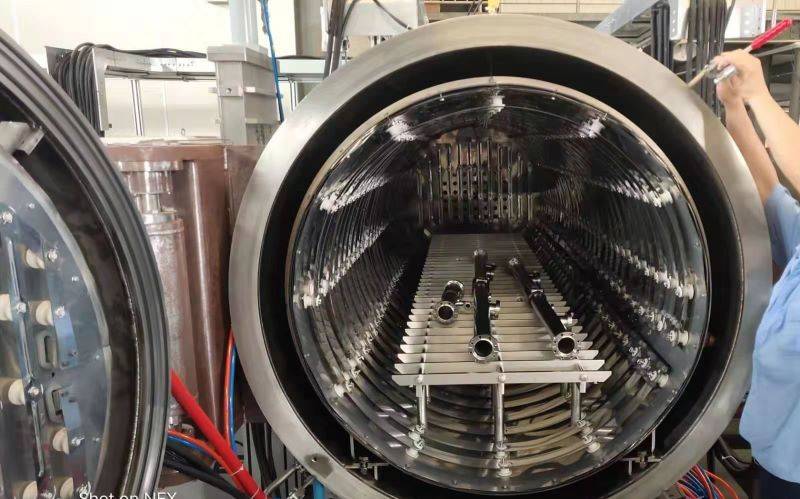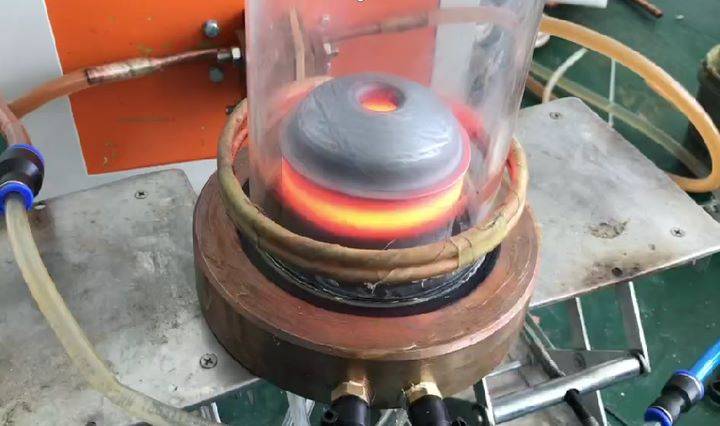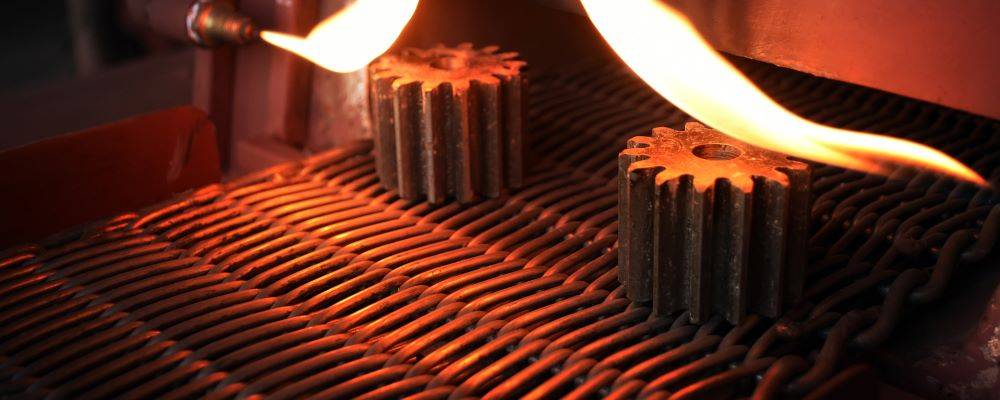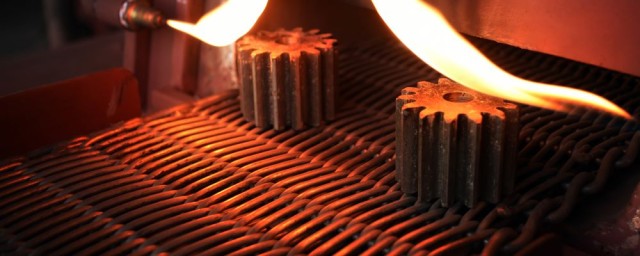Structural Features of Vacuum Furnaces
Strict Vacuum Sealing
In the realm of powder metallurgy, the sintering or heat treatment of metal products is meticulously conducted within a closed vacuum furnace. This process demands an unwavering commitment to maintaining the furnace's working vacuum, a task that hinges on the strictest vacuum sealing protocols. The integrity of this vacuum is paramount, as it directly influences the quality and consistency of the final products.
To underscore the importance of vacuum sealing, consider the following key points:
-
Sealing Mechanisms: The vacuum furnace employs advanced sealing mechanisms, such as metal gaskets and ceramic-metal seals, to prevent any leakage of air into the system. These mechanisms are designed to withstand high temperatures and mechanical stress, ensuring that the vacuum remains stable throughout the process.
-
Material Compatibility: The materials used in the construction of the vacuum furnace, particularly those in direct contact with the vacuum environment, are carefully chosen for their low vapor pressure and resistance to oxidation. This ensures that the furnace remains free from contaminants that could compromise the vacuum.
-
Continuous Monitoring: Modern vacuum furnaces are equipped with sophisticated monitoring systems that continuously track the vacuum level. Any deviation from the desired vacuum is immediately detected, allowing for prompt corrective actions to be taken. This proactive approach ensures that the process remains within the optimal parameters.
-
Quality Assurance: The stringent vacuum sealing requirements are not just a technical necessity but also a critical aspect of quality assurance. By maintaining a perfect vacuum, the furnace eliminates the risk of oxidation and contamination, which are common issues in conventional furnaces. This results in higher quality products with superior mechanical properties.
In summary, the strict vacuum sealing in vacuum furnaces is a cornerstone of the powder metallurgy process. It not only ensures the integrity of the vacuum environment but also significantly enhances the quality and reliability of the final metal products.

Heating and Insulation Materials
Vacuum resistance furnaces employ specialized materials that can withstand extreme temperatures while maintaining low vapor pressures. The primary materials used in these furnaces include tungsten, molybdenum, tantalum, and graphite. These materials are chosen for their exceptional thermal resistance and low reactivity, which make them ideal for high-temperature applications in a vacuum environment.
In contrast to conventional resistance furnaces, these materials are not suitable for atmospheric conditions due to their propensity to oxidize. Oxidation can significantly degrade their performance and lifespan, making them impractical for use in furnaces that operate under normal atmospheric pressure. Therefore, the unique requirements of vacuum furnaces necessitate the use of these high-temperature resistant, low vapor pressure materials to ensure efficient and reliable operation.
| Material | Thermal Resistance | Low Vapor Pressure | Oxidation Sensitivity |
|---|---|---|---|
| Tungsten | Very High | Very Low | High |
| Molybdenum | High | Low | High |
| Tantalum | High | Low | High |
| Graphite | High | Low | High |
The selection of these materials is crucial for maintaining the integrity of the furnace and ensuring the quality of the products processed within it. Their ability to function effectively in a vacuum environment without oxidizing makes them indispensable for the advanced applications of vacuum furnaces in powder metallurgy and other high-temperature processes.
Cooling Device
The cooling device in a vacuum furnace plays a crucial role in maintaining the structural integrity and operational efficiency of key components. Specifically, elements such as the furnace shell, furnace cover, and electric heating element export devices undergo rigorous thermal stresses during operation. To mitigate these stresses and prevent thermal deformation, these components are equipped with water-cooling systems.
Water-cooling is essential for several reasons:
-
Preventing Deformation: The intense heat generated during the sintering or heat treatment processes can cause significant thermal expansion. Water-cooling helps to dissipate this heat, preventing the components from deforming under high temperatures.
-
Ensuring Longevity of Vacuum Sealing Rings: The vacuum sealing ring is critical for maintaining the furnace's working vacuum. Prolonged exposure to high temperatures can degrade the material properties of the sealing ring, leading to leaks and compromising the vacuum environment. Water-cooling helps to extend the lifespan of the sealing ring by keeping it within a manageable temperature range.
-
Maintaining Operational Efficiency: By efficiently cooling the furnace components, the overall operational efficiency is maintained. This ensures that the furnace can continue to operate at peak performance without the risk of thermal damage to its critical parts.
In summary, the water-cooling system is indispensable for the proper functioning of a vacuum furnace, safeguarding against thermal deformation and ensuring the longevity of vital components.
Low Voltage and High Current
To prevent the occurrence of glow discharge and arc discharge, vacuum furnaces are designed to operate with low voltage, typically not exceeding 80-100 V. This low voltage setting is crucial as it minimizes the risk of electrical discharges that could damage the furnace and the materials being processed. Alongside this low voltage, vacuum furnaces employ high current to ensure efficient heating of the materials.
The design of vacuum furnaces includes specific measures to mitigate the risks associated with electrical discharges. One such measure is the avoidance of tip parts, which are known to concentrate electric fields and can lead to discharges. Additionally, maintaining proper electrode spacing is essential. This spacing is carefully calibrated to balance the need for effective current flow with the prevention of electrical arcing.
| Parameter | Description |
|---|---|
| Voltage Range | 80-100 V |
| Current Level | High |
| Design Measures | Avoidance of tip parts, proper electrode spacing |
| Purpose | Prevent glow discharge and arc discharge |
These design features ensure that the vacuum furnace operates safely and efficiently, supporting the precise and controlled conditions required for powder metallurgy processes.
Functions of Vacuum Furnaces
Vacuum Heat Treatment
Vacuum heat treatment is a sophisticated process that involves heating metals to extreme temperatures in a controlled, air-free environment. This method utilizes a vacuum chamber with an absolute pressure significantly lower than that of the normal atmosphere, creating an inert environment that prevents any chemical reactions with the metal. In this process, metal parts are placed in a tightly sealed chamber where a vacuum pumping system removes the majority of the air, ensuring that no reactive elements are present.
The parts are then heated to temperatures as high as 2,400°F (1,316°C) at a carefully controlled rate. The duration of this heating phase, known as the "soak time," varies depending on the specific requirements of the part and the type of metal being treated. This period can range from three to 24 hours and is meticulously controlled by a computer to ensure consistency and uniformity across treatments.
One of the key advantages of vacuum heat treatment is that the parts emerge ready for further forming processes without any scaling or discoloration. Additionally, they do not require any additional cleaning, streamlining the production process. To achieve these benefits, the vacuum chamber is typically filled with argon gas after the oxygen is removed, further enhancing the inert environment.
| Process Step | Description |
|---|---|
| Vacuum Creation | Removal of air from the chamber to create an inert environment. |
| Heating | Controlled heating of parts to temperatures up to 2,400°F (1,316°C). |
| Soak Time | Duration of heating, tailored to the part and metal type, ranging from 3 to 24 hours. |
| Cooling | Gradual lowering of temperature to achieve desired properties. |
This precise control over the heating and cooling phases ensures that the final product meets the required specifications, making vacuum heat treatment an indispensable process in industries where material integrity and surface quality are paramount.
Vacuum Brazing
Vacuum brazing is a specialized welding process that takes place within a vacuum brazing furnace, where the weldments are heated to a temperature above the melting point of the filler metal but below that of the base metal. This method leverages the filler metal's unique properties of wetting and flowing to create a strong, durable joint. The process is conducted in an environment devoid of atmospheric gases, which not only prevents oxidation but also ensures a high level of cleanliness and precision.
Unlike traditional brazing methods that rely on protective or deoxidizing gases like hydrogen, vacuum brazing is a fluxless process performed at high temperatures in an atmosphere with pressures typically in the range of (10^{-5}) to (10^{-6}) torr. This ultra-low pressure environment not only deoxidizes the metals being brazed but also eliminates potential reactions that could occur in hydrogen atmospheres, thereby enhancing the overall integrity of the brazed joint.

Key advantages of vacuum brazing include:
- Extremely Clean Work Surface: The absence of atmospheric contaminants ensures that the work surface remains pristine, free from impurities that could compromise the quality of the joint.
- Superior High Integrity: The process results in high strength brazing joints, making it ideal for applications requiring structural integrity and durability.
- Excellent Product Brightness: The finished product exhibits a high degree of brightness, which is particularly important in aesthetic applications.
- Good Wettability and Fluidity: The filler metal's ability to wet and flow effectively allows for the brazing of complex and narrow components, expanding the range of applications.
- Improved Product Yield: The controlled environment and precise temperature management contribute to a higher yield of successful brazed components.
Furthermore, vacuum brazing can also be used to remove hydrogen gas from materials like stainless steel that were previously brazed in hydrogen atmospheres. This capability is particularly useful in industries where material purity and consistency are critical, such as aerospace and medical device manufacturing.
Vacuum Sintering
Vacuum sintering is a sophisticated process that involves heating metal powder products in a controlled vacuum environment. This method is particularly advantageous for creating intricate and delicate components that are challenging to produce through traditional casting or machining techniques. The vacuum environment ensures that the metal powder grains sinter through adhesion and diffusion, forming a solid mass with minimal defects and optimal structural integrity.
One of the key benefits of vacuum sintering is its ability to produce parts with exceptional quality and design flexibility. The process allows for the creation of components with no seams, joints, or fillers, resulting in clean, bright parts that are both aesthetically pleasing and functionally superior. This is particularly beneficial for industries that require high precision and consistency, such as aerospace, medical devices, and advanced electronics.
The process of vacuum sintering begins with debinding, where the binder material is removed from the metal powder mixture. Following this, the powder is placed in a vacuum furnace and heated to temperatures close to the melting point of the metal. As the temperature rises, the metal particles begin to bond and diffuse into each other, forming a solid structure. This method not only ensures the integrity of the final product but also minimizes waste, making it an economically and environmentally efficient process.
Vacuum sintering is also highly versatile, accommodating various metal powder technologies such as metal injection molding, 3D printing, and powdered metal manufacturing. This flexibility allows manufacturers to leverage the superior quality and adaptability of vacuum sintering across a wide range of applications, from small, intricate parts to large, complex structures.
In summary, vacuum sintering is a pivotal technique in industrial metallurgy, offering unparalleled precision, quality, and design freedom. Its ability to produce defect-free, high-performance components makes it an indispensable tool for modern manufacturing processes.

Vacuum Magnetization
Vacuum magnetization is a specialized process primarily utilized for the magnetization treatment of metal materials within a controlled vacuum environment. This technique is particularly advantageous for enhancing the magnetic properties of metals, ensuring uniformity and precision in the magnetization process.
In vacuum magnetization, the metal materials are subjected to a magnetic field while being isolated from atmospheric conditions. This isolation is crucial as it prevents the introduction of impurities that could otherwise degrade the magnetic properties of the material. The vacuum environment also facilitates a more consistent and efficient transfer of energy, leading to better control over the magnetization process.
The process typically involves the following steps:
- Preparation of Metal Materials: The metal materials are cleaned and prepared to ensure no surface contaminants are present.
- Placement in Vacuum Furnace: The prepared materials are placed inside a vacuum furnace, which is then sealed to create a vacuum environment.
- Application of Magnetic Field: A controlled magnetic field is applied to the materials, inducing magnetization.
- Monitoring and Control: Throughout the process, parameters such as temperature, magnetic field strength, and vacuum level are closely monitored and controlled to ensure optimal results.
Vacuum magnetization is widely used in industries such as electronics, aerospace, and automotive, where high-quality, reliable magnetic materials are essential. The ability to precisely control the conditions within the vacuum environment allows for the production of materials with consistent and superior magnetic properties.
Related Products
- Vacuum Heat Treat and Pressure Sintering Furnace for High Temperature Applications
- Vacuum Hot Press Furnace Machine Heated Vacuum Press
- Vacuum Hot Press Furnace Heated Vacuum Press Machine Tube Furnace
- Vacuum Dental Porcelain Sintering Furnace
- Lab-Scale Vacuum Induction Melting Furnace
Related Articles
- Exploring the Advanced Capabilities of Spark Plasma Sintering (SPS) Furnaces
- How Vacuum Induction Melting Outperforms Traditional Methods in Advanced Alloy Production
- How Vacuum Induction Melting Ensures Unmatched Reliability in Critical Industries
- Mastering Vacuum Furnace Brazing: Techniques, Applications, and Advantages
- Comprehensive Guide to Vacuum Hot Press Furnace Application














